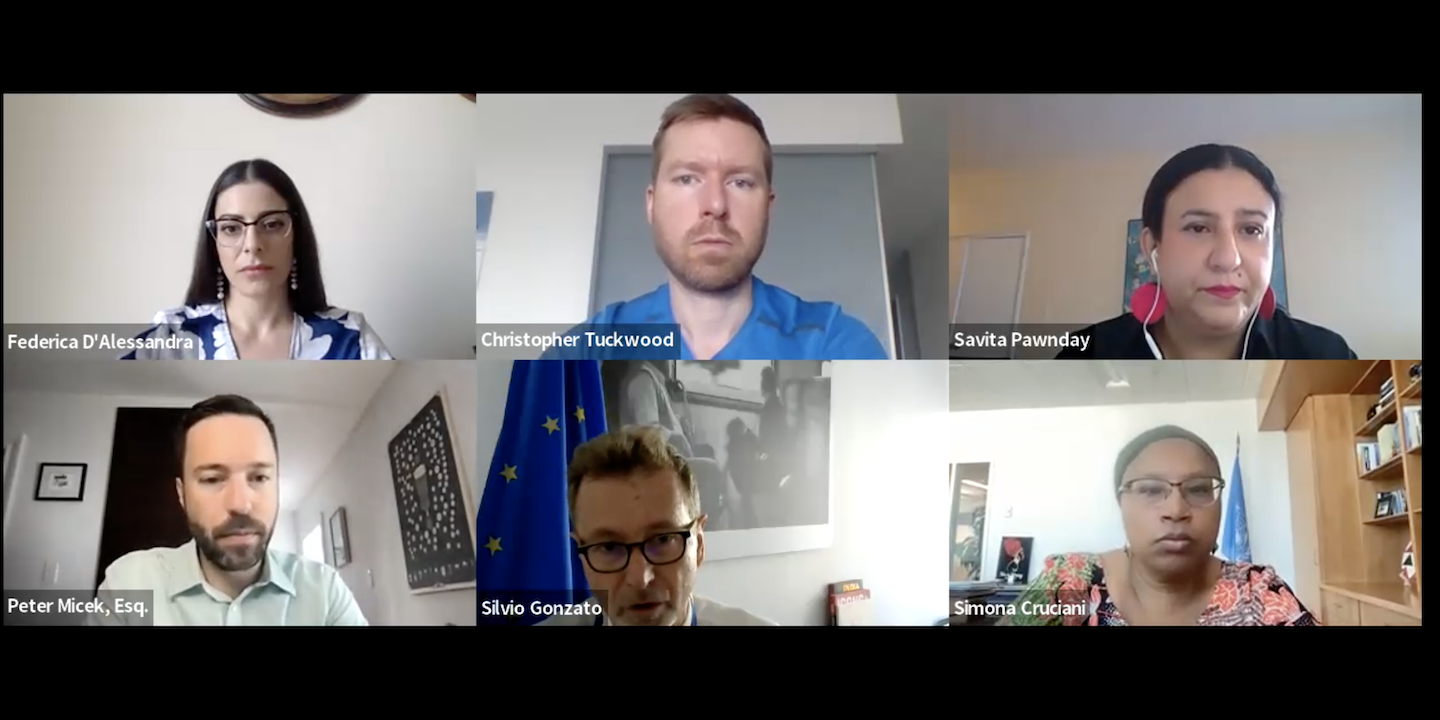
Digital Technologies and Atrocity Prevention
On 29 June the Delegation of the European Union to the United Nations and the Global Centre for the Responsibility to Protect co-hosted a virtual event entitled, “Digital Technologies and Atrocity Prevention.”
New and emerging technologies – including geospatial technology, facial recognition and surveillance tools and social media platforms, among others – have rapidly shifted the space to perpetrate and prevent atrocities in the modern world. These technologies have, at times, accelerated and contributed to the detrimental effects of information silos and disinformation and are increasingly used to target or dehumanize marginalized or persecuted groups, particularly ethnic or religious minorities. They have also been used to monitor and systematically restrict the work of civil society, human rights defenders and perceived government opponents. Nevertheless, emerging technologies can also be crucial to the prevention of atrocities. Digital technologies can help cultivate an inclusive public discourse, compel humanitarian responses and document and address early warning signs of potential atrocities.
Speakers highlighted how states can best harness new digital technologies as a tool for atrocity prevention, and aid in countering those utilizing such technologies for malignant purposes. The discussion also focused on the positives and negatives of the role of technology in the atrocity prevention space, highlighting how technology may create new risks that should be accounted for in threat assessments.
Opening remarks:
-
-
- H.E. Silvio Gonzato, Deputy Permanent Representative of the European Union to the United Nations
-
Speakers included:
-
-
- Alice Wairimu Nderitu, UN Under-Secretary-General and the Special Adviser on the Prevention of Genocide
- Peter Micek, General Counsel at Access Now and Lecturer at the Columbia University School of International and Public Affairs
- Federica D’Alessandra, Deputy Director of the University of Oxford’s Institute for Ethics, Law and Armed Conflict
- Christopher Tuckwood, Executive Director of the Sentinel Project
- Savita Pawnday, Executive Director of the Global Centre for the Responsibility to Protect (moderator)
-
Related Content

Savita Pawnday speaks on a panel regarding Gender, Accountability and Atrocity Prevention
